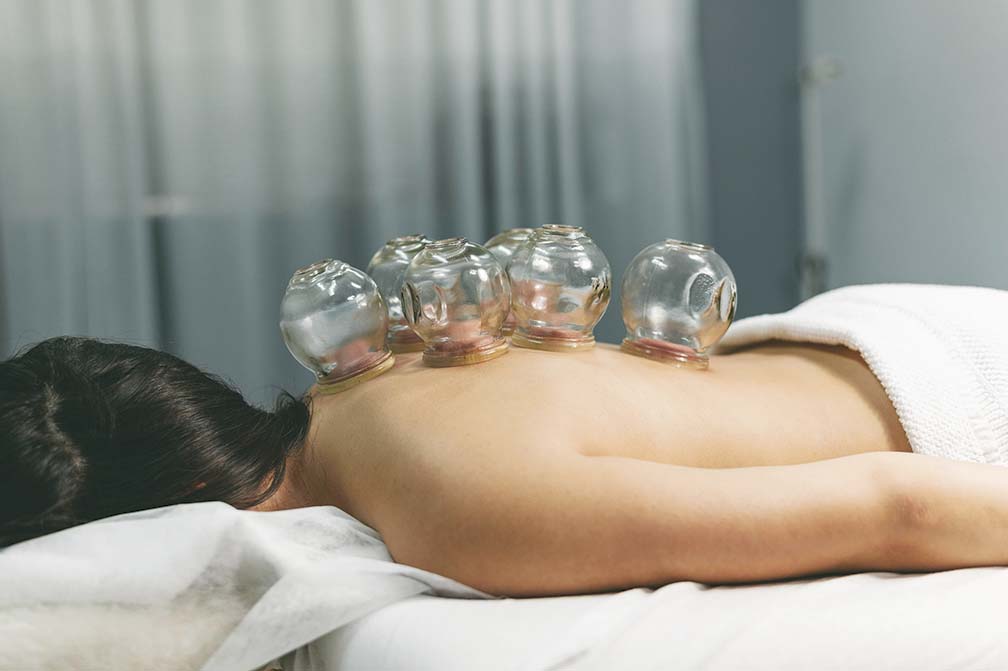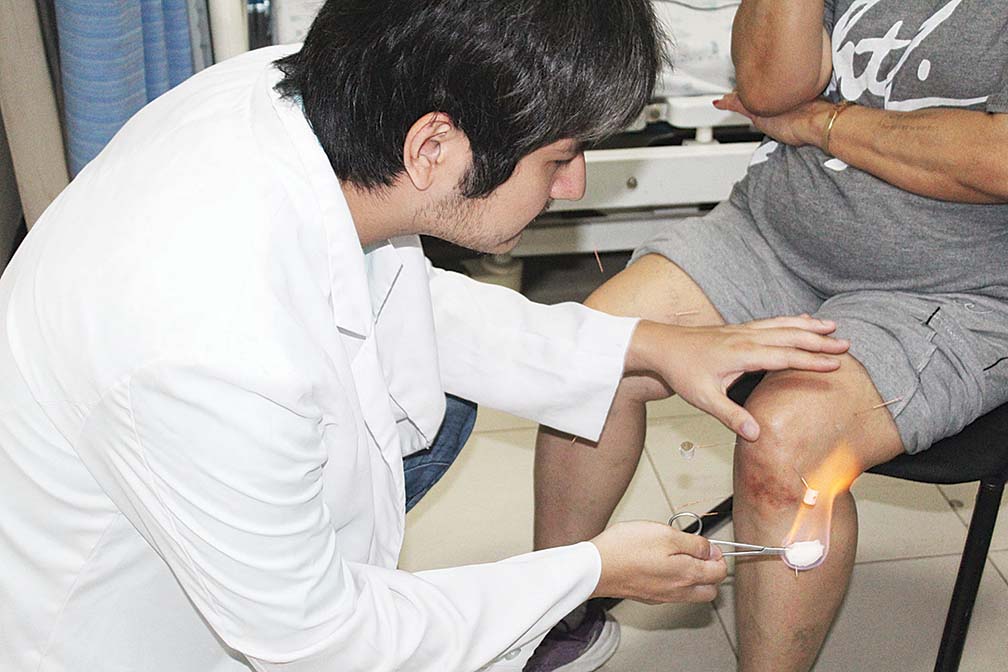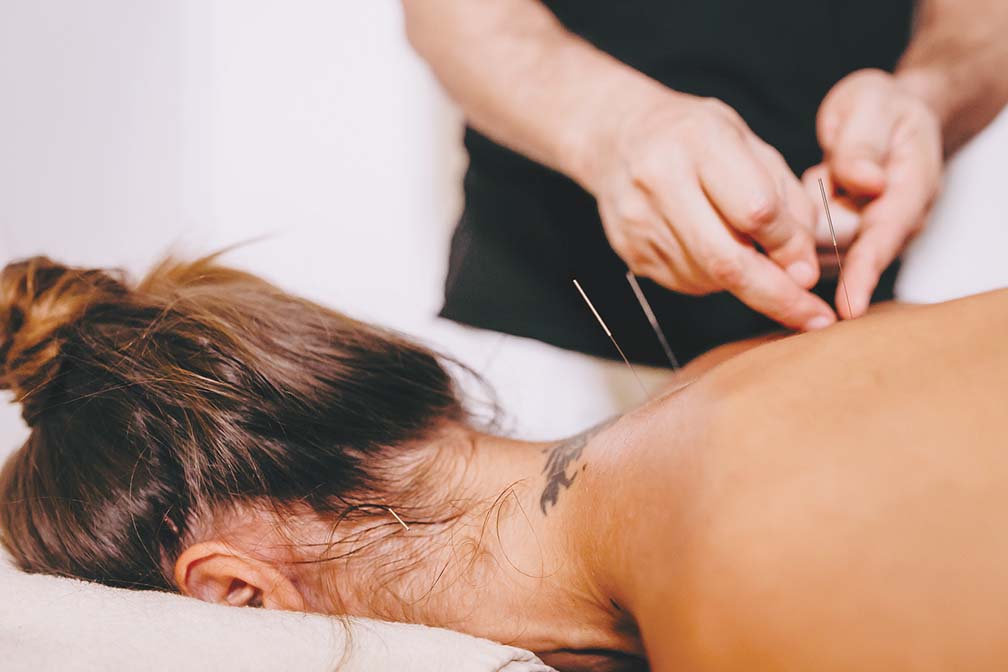If you are not too keen about taking pain medication to relieve yourself of the constant pain you are feeling in your knees and other parts of your body, you may want to consider other options. One option is acupuncture.
According to Dr. Fatima Lao Tan, who studied Traditional Chinese Medicine (TCM) after graduating with a Doctor of Medicine degree from the University of Santo Tomas, acupuncture is a branch of TCM which involves the insertion of tiny, sterile needles through the skin at strategic points in your body. TCM says health is the result of a harmonious balance of the complementary extremes of “yin” and “yang” of the life force known as “qi” which is pronounced as “chi.”
“Qi flows through meridians, or channels, in the human body,” Tan explained. “Illness, disease or pain happens due to the consequences of an imbalance or blockage of the forces. Inserting needles into these points with appropriate combinations bring the energy flow back into proper balance.”
After graduating from UST, Tan, who is Chinese, went to Hunan, China to study TCM. She specializes in acupuncture on pain management, insomnia, fertility, dysmenorrhea and other diseases and has been offering this service since 2016 at the VRP Medical Center in Mandaluyong City. She was the only one in her batch who pursued TCM since she has been exposed to it since she was very young.
When asked if a patient had to exhibit any particular symptoms to undergo acupuncture, Tan explained that most of the patients go to her because of pain and the fear of the side effects of taking pain medication on a regular basis.
“Some patients just come in for stress management, for wellness and for preventive purposes. I also have patients who come in because of migraine, back and shoulder pain, amongst others. Other indications for acupuncture include insomnia, vertigo, and even fertility.”
After spending months at home because of community quarantine, acupuncture sessions can help ease anxiety, depression, insomnia and help patients cope with their present situations.
“With acupuncture, we have points to calm the spirit and the heart. There are points that help promote heart blood flow,” she said, adding that most of her patients are aged 30 years old and above.
TREATMENT PLAN
When a patient goes to her for a consultation, Tan usually spends the first part of the consultation asking how the patient feels, if he is able to get enough sleep, what are the stressors, when the pain started if it is pain related, among others. She would then proceed to check the patient’s pulse and tongue. Based on the answers to her questions and on the pulse and tongue of the patient, Tan will then be able to come up with a treatment plan.
“Sometimes, the stress that you are experiencing is coming from an ailment that you have been suffering from. Sometimes, it is psychological. You may be anxious because you do not know that you have this ailment. In acupuncture, it balances the imbalance,” she explained.
Once the treatment plan has been explained to the patient, treatment can immediately start. The number of sessions will depend on how the patient has been responding to the treatment. Ten sessions is equivalent to one cycle. Acupuncture is usually done together with cupping therapy and moxibustion.

Cupping is the term applied to a technique that uses small glass cups or bamboo jars as suction devices that are placed on the skin to disperse and break up stagnation and congestion by drawing congested blood or energy to the surface. Cupping invigorates local circulation of qi and blood in the area being treated, resolving swelling, pain and tension.
Drawing impurities to the surface, Tan said, removes toxins. From the Western physiological perspective, cupping loosens connective tissue or fascia and stimulates blood flow to the surface. Cupping stimulates tissue relaxation and better cell-to-cell communication.
“Cupping literally breaks the blood vessels and it is not always a bad thing because this is like dead blood already. And then after cupping, you will feel so much better because cupping breaks up the vessels to allow the blood in your body to flow again,” Tan said.
Moxibustion, on the other hand, involves the burning of moxa which is a cone or stick made of ground mugwort leaves, on or near the body’s meridians and acupuncture points. The heat produced by moxibustion helps stimulate these points and improves the flow of qi in the body. The improved qi circulation can help with a range of diseases from pain to digestive ailments.
Tan explained that the needles used in acupuncture are different from the needles used to draw blood or deliver a vaccine. The needles used are finer and most people report little or no pain from the treatment.
COST PER SESSION
The cost of each acupuncture session ranges from P1,500 to P1,800 plus with P1,500 covering acupuncture only and P1,800 covering acupuncture, cupping and moxibustion. Tan adopts a holistic approach when treating the patient through acupuncture and she tries to manage the patient’s expectations as most of them expect instant relief from their symptoms.
“When your doctor gives you antibiotics for your infection, you have to take it three times a day over a seven-day period. This is the same as acupuncture. The results of your treatment will gradually come in and I assure you that you will feel a better after the sessions,” Tan said.
According to the World Health Organization (WHO), diseases, symptoms or conditions for which acupuncture has been proven to be an effective treatment are adverse reactions to radiotherapy and/or chemotherapy, allergic rhinitis, dysmenorrhea, gastritis, facial pain, headache, hypertension, essential hypotension, primary induction of labor, knee pain, low back pain, correction of malposition of fetus, morning sickness, nausea and vomiting, neck pain, pain in dentistry, periarthritis of the shoulder, postoperative pain, rheumatoid arthritis, sciatica, sprain, stroke, tennis elbow among others.

Even if WHO has already endorsed acupuncture for over 100 conditions, many doctors are still not open to the idea of acupuncture and TCM.
“Not all of my colleagues accept acupuncture because it is very vague for them and they are all science based and they can see it in the laboratory. They cannot see qi because it is energy, something that doctors cannot see so we do not get many referrals from doctors,” Tan said.
“Personally, I have tried it and I feel it is very effective so that is why I pursued this course. We get most of our patients through online searches because they are looking for other options for their ailments,” she added.
She is confident though that the practice will become popular in the next couple of years because of the emphasis on wellness. So far, only the University of the Philippine College of Medicine and the Ateneo School of Medicine and Public Health offer introductory courses to acupuncture and to TCM.
“It is difficult to imagine qi and acupuncture if you do not try it. The food that you eat will transform into energy and that is what Chinese medicine is all about. You are what you eat and if you eat junk food, the energy it produces is of poor quality too. If you eat healthy, the energy that flows through your body will not stress you out that quickly,” Tan explained.


